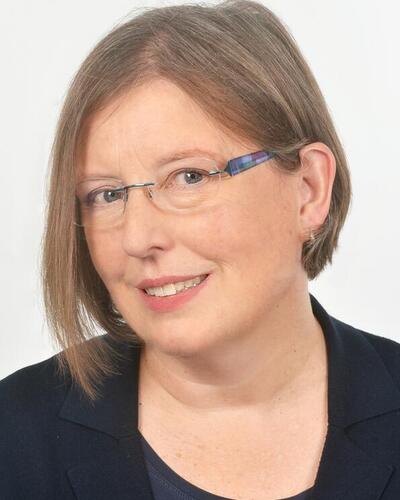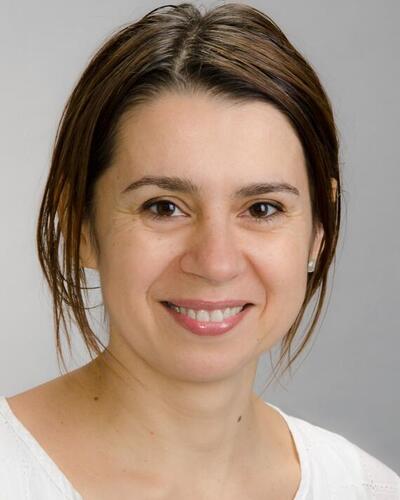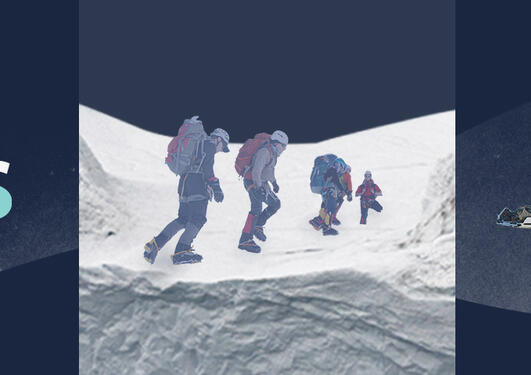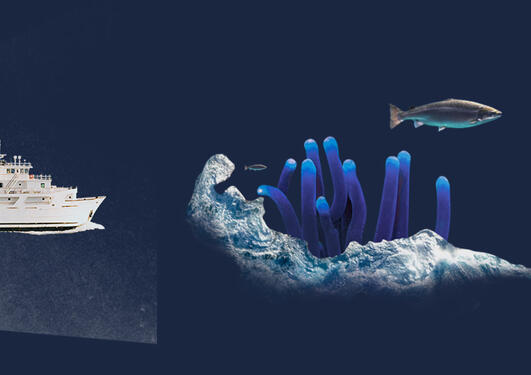Research possibilities for the MSCA SEAS postdoctoral research fellow in marine aspects related to human health
The information on this page is a supplement to the complete advertisement of the position in the recruitment-portal Jobbnorge. The full advertisement of this position in Jobbnorge will be available after august 1, and linked from this webpage. Call deadline is October 31, 2022.
Hovedinnhold
Key information
One position | MSCA SEAS postdoctoral research fellow at the Faculty of Medicine |
Jobbnorge title | MSCA SEAS postdoctoral research fellow in marine aspects related to human health |
Topical frame | Marine aspects related to human health within various subtopics depending on supervisor |
Available supervisors | Professor Jutta Dierkes; Professor Daniela Elena Costea; Professor Frode Selheim |
Mobility | For an incoming or outgoing candidate, see mobility rules |
Unit of employment | Either at the Department of Biomedicine or at the Department of Clinical Medicine at University of Bergen (depending on supervisor) |
Group affiliation(s) | Depending on supervisor |
Thematic area and contact
This position will be connected to one of the following thematic areas and supervisors:
- The ambiguous role of seafood as a source of nutrients and of pollutants
Supervisor: Professor Jutta Dierkes, Department of Clinical Medicine
- Assessing marine toxins for combined therapy in head and neck cancer by use of ex vivo 3D models
Supervisor: Professor Daniela Elena Costea, Department of Clinical Medicine
- Cellular adaptations to diving in marine mammals and the relevance for ecotoxicology and human health
Supervisor: Professor Frode Selheim, Department of Biomedicine.
The position is open to either an incoming or an outgoing candidate, see mobility rules.
Information about the supervisors and research possibilities for the fellow is available below. For further details about the research possibilities please contact the relevant supervisor(s).
Jutta Dierkes - research possibilities and resources
Thematic area offered by Professor Jutta Dierkes: The ambiguous role of seafood as a source of nutrients and of pollutants
The successful applicant is expected to develop a research plan within this topical frame
There is increasing evidence that plastic fragments/fibres denominated as microplastics can be ingested and internalized by an array of marine organisms and thus also entering the human food chain. The occurrence of microplastics in fish and other seafood raises substantial concerns about the human intake of microplastics, especially in populations with a high seafood intake.
During pregnancy, maternal seafood consumption is associated with beneficial effects (as recently summarized by (1)) both on birth outcomes and neurodevelopment in infants and children. However, microplastic exposure from seafood intake during pregnancy and possible harmful effects on health are still unknown.
We hypothesize that microplastics fragments/fibres present in seafood are ingested by humans, may be absorbed by the gut, may accumulate in the placenta of pregnant women and pose health risks both to the pregnant women and the foetuses.
In this project, we will both investigate the presence and the risk of microplastics in humans, by investigating the faeces, cord blood, and placenta of pregnant women and relate this to their overall diet and seafood consumption and conduct experiments with microplastics in pregnant rats to assess the mechanisms of microplastic toxicity. The work will provide evidence for health effects of microplastics and also vital information for risk assessment for microplastics pollution from terrestrial and marine sources.
Daniela Elena Costea - research possibilities and resources
Thematic area offered by Professor Daniela Elena Costea: Assessing marine toxins for combined therapy in head and neck cancer by use of ex vivo 3D models
The successful applicant is expected to develop a research plan within this topical frame
Head and neck cancer is a clinical challenge due to its resistance to currently available treatment strategies, including radio-, chemo- and immunotherapy. Previous research showed that marine toxins affect cell viability and migration on a range of cancer cells. This project aims at investigating the effect of marine toxins on head and neck cancer and normal counterpart tissues by using state-of-art ex vivo 3D multicellular models (ex vivo ‘avatars’), clonal barcoding and spatial proteomics.
We would like to evaluate the ability of several well characterized marine toxins (bryostatin, palytoxin) and extracts from marine benthic diatoms, alone or in combination with chemo/radio/immunotherapy, on inducing apoptosis, impairing migration, and clonal selection of fluorescent protein marked and genetically barcoded head and neck cancer cells grown in 3D ex vivo models together with cancer associated fibroblasts and immune cells. The cytotoxic effects of the marine compounds will also be assessed on 3D ex vivo models of normal human oral mucosa.
We will use ex vivo 3D multicellular models well established at our research group and mass imaging cytometry (Hyperion technology) recently established at our Centre of Excellence for Cancer Biomarkers CCBIO, at University of Bergen, barcode sequencing (at the laboratory of prof. Tinhofer-Keilholz, at University of Medicine – Charitè, Berlin), and single cell proteomics (in collaboration with prof. Coscia, Spatial Proteomics Laboratory, Max Delbrück Center for Molecular Medicine, Berlin) to evaluate clonal selection and molecular changes induced by the tested marine toxins and compounds alone or in combination with radio-/chemo-/immunotherapy. This is a first step towards clinical utilization in oncology of promising marine compounds to achieve sustainability.
Research group interests and competence
The postdoctoral fellow will be part of the Experimental Pathology Research Group of prof. DE Costea, which is one of the research groups of the Center for Cancer Biomarkers, CCBIO at UiB. CCBIO is a center of excellence in research financed by the Norwegian Research Council and belongs to the Department of Clinical Medicine at UiB. The postdoctoral fellow will be part of the prestigious research school in cancer running at CCBIO. The research at Experimental Pathology Research Group focuses on understanding the role of tumour stroma interaction in drug resistance and identification of new biomarkers and therapeutical targets in head and neck cancers. The research group has expertise in ex vivo 3D multicellular models of normal and neoplastic human oral mucosa, apoptosis and prognostic biomarkers in head and neck cancers.
International collaboration and possible external co-supervisor
The Experimental Pathology Research Group has been collaborating for the past years with the research group of Prof. Dr. Ingeborg Tinhofer-Keilholz at University of Medicine – Charitè, Berlin for investigating the mechanisms of clonal resistance and selection in radio- and chemo- resistant head and neck cancers. The group has also initiated a collaboration with the Spatial Proteomics Laboratory of prof. Coscia at Berlin with expertise on single cell proteomics.
The postdoctoral research fellow is expected to spend a significant amount of time to the external collaborator laboratories in Berlin in order to analyse clonal resistance and spatial proteomic changes of head and neck cancer cells assembled in ex vivo 3D multicellular models and treated/co-treated with marine toxins and radio-/immune- therapy.
The possible external co-supervisors are prof. Tinhofer-Keilholz and prof. Coscia.
National collaboration and possible internal co-supervisor
The Experimental Pathology Research Group has a long-standing collaboration with the Tissue Engineering Group of prof Kamal Mustafa at Institute for Clinical Odontology and this project will benefit from this collaboration for the optimal use of the 3D multicellular ex vivo models.
The possible internal co-supervisor is researcher Tarig Osman.
Collaboration with other sectors and innovation potential
The project has the potential to reveal new targets/mechanisms that can be targeted in head and neck cancers by marine toxins. Our group has a long-standing collaboration with Bergen Technology Transfer Office (visinnovasjon.no) and Senior Innovation Manager Malgorzata Barczyk, PhD from VIS will mentor the postdoctoral research fellow for the innovation potential and possible development towards commercialization of the results of this project.
Infrastructure
The postdoctoral research fellow will work at Gade Laboratory for Pathology, which is located at Haukeland University Hospital (HUS) and has a state-of-art cell culture laboratory and access to the new technology established at CCBIO, UiB such as single cells deep imaging (Hyperion, located in the Laboratory Building at HUS, which is an adjacent building to the central block of HUS where Experimental Pathology Research Group cell lab and wet labs are located ).
During the stay abroad at the laboratories of our collaborators in Berlin, the postdoc has access to their state-of-art technologies in genetic barcoding and sequencing (lab of prof Ingeborg Tinhofer-Keilholz at Charitè) and spatial proteomics (lab of prof Coscia at Max Delbrück Center for Molecular Medicine).
Funding
Research at Experimental Pathology Research Group is financed by University of Bergen, The Norwegian Research Council and The Health Trust of Western Norway (Helse Vest).
Research at collaborator labs in Berlin is financed by EU, European Oncology Society and German Ministry of Science and Technology.
Frode Selheim - research possibilities and resources
Thematic area offered by Professor Frode Selheim: Cellular adaptations to diving in marine mammals and the relevance for ecotoxicology and human health
The successful applicant is expected to develop a research plan within this topical frame
Marine mammals have adapted to high pressure and hypoxia/reperfusion exposure during diving. This has allowed them to tolerate 1 h dives down to 3000 m below sea level.
Similar exposure in humans would lead to massive damage to lungs, the cardiovascular system and the brain. Cellular and molecular adaptation described in marine mammals involves increased tolerance for reactive oxygen species, metabolic rewiring in the brain, altered vascular nitric oxide signaling and adaptive gene loss in the hemostatic machinery.
Altered protein expression in different tissues and cell types and evolutionary selection of missense mutations are the major drivers of the adaptations. It is, however, unclear how these cellular adaptations affect the ability of marine mammals to tackle pollutants from human activity. Our understanding of cellular adaptations in marine mammals can also provide important knowledge for human medicine, such as prevention and treatment of stroke and safer diving.
A comparative cellular and proteomics approach will therefore be taken between cell types and tissue derived from marine mammals, related terrestrial mammals and humans.
The project will rely on existing facilities and competence to perform cellular exposure to hyperbaric, hypoxic/hyperoxic under the influence of different common marine pollutants and analyze cellular responses using proteomics and multiomics.
Project group (current)
- Prof. Frode Selheim, Department of Biomedicine, Head of the proteomics facility in Bergen. Expertise: Proteomics, hematology, cell signaling.
- Research prof. Rune Kleppe, National Center for Maritime- and Diving Medicine, Haukeland University Hospital. Leader of the hyperbaric cell lab. Expertise: Hyperbaric cell biology, enzymology, protein chemistry.
- Prof. Anders Goksøyr/Assoc. prof. Odd André Karlsen, Department of Biological sciences (BIO), UiB. Expertise: Environmental toxicology, marine ecotoxicology, systems toxicology.
Project focus
Within the thematic research area, the successful candidate will characterize how cells from marine mammals and relevant terrestrial mammals respond to stressors at hyperbaric conditions that mimic the marine environment. Relevant stressors are pollutants found in the marine environment, ischemia/reperfusion exposure, hyperoxic and high-pressure nitrogen gas exposures. Particularly, we are interested in a comparable analysis of how these conditions affect adaptive cellular behaviors, such as production of reactive oxygen species, metabolic responses, release of extracellular vesicles, and cell death. Proteome analysis will be key to investigate underlying molecular mechanisms for the observed cellular responses.
The findings of the project will be relevant for understanding cellular adaptations in marine mammals and the impact of pollutants on their health. In the case of humans, the results will provide biological insight into key cellular stress responses, relevant for treatment of cardiovascular and neurological (stroke) disease, the use of hyperbaric oxygen therapy and for safer diving – a human activity of high relevance in the context of an increasing subsea activity in relation to offshore wind power and the closing down of old oil installations.
The project will make use of different cell culture systems, tissue/cell isolates and animal models. When relevant, blood samples from human volunteers will be used. Different types of omics technologies are relevant for the project, in particular proteomics, but also transcriptomics and metabolomics. In addition, different functional outcomes and stress responses will be investigated.
Relevant infrastructures for the project include:
- The proteomics facility at the Department of Biomedicine, which is part of the national infrastructure National network for Advanced Proteomics Infrastructure (NAPI)
- The hyperbaric cell laboratory at Haukeland University Hospital (NCMDM) has facilities for relevant oxygen and pressure exposures.
- Facilities for animal and cell culture experiments (including incubator for hypoxic conditions) on rat, mouse, whales (cell culture), and fish, tissue preparation at BIO, e.g., liver slice cultures.
- Core facilities for flow and mass cytometry at the Department of Clinical Science
- Molecular imaging facility at the Department of Biomedicine
- LC-MS/MS metabolomics facilities at BIO and the Department of Clinical Science
- Several relevant national infrastructures have facilities at UiB; National Consortium for Sequencing and Personalized Medicine (NorSeq), Norwegian NMR Platform (NNP).
See the full advertisement in Jobbnorge
The full advertisement in Jobbnorge will be available from august 1, 2022, until call deadline October 31.
Important general information
Please be aware
- That until August 1st 2022 (official call opening), the information on this page must not be considered as final, as adjustments may be done! There might also be minor adjustments in the Guide for applicants and the templates needed for applying.
- That the application process is time-demanding and requires a close dialogue with name-given available faculty supervisor or contact who, close to the deadline, must sign a supervisor match declaration if an application is to be eligible.
- That some fields of research, especially within sensitive technology areas, might be enforced by Norwegian and international regulations regarding Control of the Export of Strategic Goods, Services and Technology. Candidates who by assessment of the application and attachment are seen to conflict with the criteria in these regulations might be prohibited from recruitment to UiB.




